Paul Rodden • Season: 2024 • Episode: 375
Listen Now:
>Direct Link To The Hydrogen Podcast MP3<
Listen On Your Favorite App:
Welcome to The Hydrogen Podcast!
Episode 375, In this episode of The Hydrogen Podcast, host Paul Rodden delves into ExxonMobil’s groundbreaking Baytown project, set to become the world’s largest low-carbon hydrogen facility, highlighting its potential to transform industrial sectors and reinforce the U.S. as a leader in blue hydrogen production. Additionally, he explores the EU’s second renewable hydrogen auction, emphasizing its role in accelerating decarbonization technologies and enhancing the region’s leadership in the global hydrogen market.
Thank you for listening and I hope you enjoy the podcast. Please feel free to email me at info@thehydrogenpodcast.com with any questions. Also, if you wouldn’t mind subscribing to my podcast using your preferred platform… I would greatly appreciate it.
Respectfully,
Paul Rodden
VISIT THE HYDROGEN PODCAST WEBSITE
https://thehydrogenpodcast.com
CHECK OUT OUR BLOG
https://thehydrogenpodcast.com/blog/
WANT TO SPONSOR THE PODCAST?
Send us an email to: info@thehydrogenpodcast.com
NEW TO HYDROGEN AND NEED A QUICK INTRODUCTION?
Start Here: The 6 Main Colors of Hydrogen
Transcript:
Worley continues their history of working with Exxon Mobil with a big EPC contract and the EU launches their second renewable hydrogen auction. I’ll take a deep dive into this news on today’s Hydrogen Podcast.
So the big questions in the energy industry today are how is hydrogen the primary driving force behind the evolution of energy? Where is capital being deployed for hydrogen projects globally? And where are the best investment opportunities for early adopters to recognize the importance of hydrogen? I will address the critical issues and give you the information you need to deploy capital. Those are the questions that will unlock the potential of hydrogen and this podcast will give you the answers. My name is Paul Rodden and welcome to the Hydrogen Podcast.
Okay. So first up this week we have some big news here in Texas with ExxonMobil’s massive low-carbon hydrogen and ammonia project at Baytown. Now, they’ve chosen engineering giant Worley for the EPC contract So what’s at stake here, how big is this project and why does it matter globally? Well, let’s start with the basics. ExxonMobil’s Baytown Project isn’t just another hydrogen facility, it’s poised to become the largest low-carbon hydrogen production site in the world, once it’s operational. Located within ExxonMobil’s existing Baytown Complex near Houston, Texas the scale of this project is mind-blowing. Now, here’s what we know. ExxonMobil aims to produce up to 1 billion cubic feet of low-carbon hydrogen per day. To put that into perspective, that’s equivalent to about 28.3 million cubic meters daily, enough to transform entire industrial sectors.
The project will also reduce nearly 1 million metric tons of low-carbon ammonia annually, a key carrier for hydrogen transport and a vital component for fertilizers and fuel. But here’s where it gets interesting – ExxonMobil plans to capture and store 7 million tons of carbon dioxide a year. That’s 7 million tons, or roughly the equivalent of 1.5 million cars off the road annually. OK, so now let’s talk about Worley, the company selected for the EPC contract. EPC stands for engineering, procurement, and construction, meaning Worley will design, procure materials, and build the critical infrastructure needed for this project. Worley, which is an Australian engineering giant, has worked with ExxonMobil on previous projects, so this partnership isn’t new. However, this contract is significant for a few reasons. The first is that it represents Worley’s growing role in the clean hydrogen and ammonia sector. And second, is that it reinforces their global relationship with ExxonMobil, aligning with shared goals of scaling up low-carbon solutions.
In a quote from Chris Ashton, the Worley CEO, But there is a catch. This contract is conditional — everything hinges on ExxonMobil making a Final Investment Decision, or FID, which is expected in 2025. Now if it’s approved, construction will begin shortly after, with a targeted start-up date of 2029 We’ve said this project is low carbon, so what does that mean? Well, in this case it’s about carbon capture and storage. The ExxonMobil Baytown facility is a blue hydrogen project. This is where natural gas is reformed into hydrogen but the associated CO2 emissions are captured. Specifically, 98% of the CO2 produced will be captured and stored permanently underground, and that captured CO2 won’t just stay local, it will integrate into ExxonMobil’s broader Gulf Coast CCS network, which is one of its most advanced in the U.S. This technology is critical because it allows ExxonMobil to continue leveraging its existing natural gas infrastructure while drastically reducing emissions. But also it’s important to zoom out and see the big picture.
What does this project mean for the global hydrogen economy? The first is the scale. ExxonMobil’s Baytown project will make the U.S. a global leader in blue hydrogen production. And once it’s operational, it will outpace any other megaproject worldwide. We also need to take in other industries looking to decarbonize. The hydrogen produced here will serve as a clean fuel and feedstock for heavy industries like steel, cement and chemicals, industries that are notoriously hard to decarbonize.
And we also need to look at the global partnerships associated with Baytown. Already the project has attracted interest from global players, companies like Mitsubishi Corp and Adnoc, Abu Dhabi’s state energy giant, have invested stakes in this project, signaling strong international collaboration. And this isn’t just about ExxonMobil and Worley, it’s about positioning the US and its allies to dominate the clean energy transition. Hydrogen, whether it is green or blue, will play a central role in achieving Net Zero goals globally. And of course no project, one of this scale, comes without challenges. We have to look at regulatory approvals. ExxonMobil needs permits, clear government policies, and continued support from federal incentives like the Inflation Reduction Act to make this viable. We also need market adoption. While industries are eager to decarbonize, clean hydrogen adoption depends on competitive pricing and infrastructure.
We also should look at the timeline involved. FID in 2025 means we are looking at 5-6 years before this plant comes online. Will global competitors, particularly in Europe and Asia, beat ExxonMobil to the punch? But on the opportunity side, this project has massive upside. It creates thousands of jobs during construction and operation – benefiting the Gulf Coast economy. It accelerates the deployment of CCS – which is a technology the world desperately needs. And it helps ExxonMobil transition into a more sustainable Energy player, aligning with growing investor and societal pressure for decarbonization. So then, what’s on the horizon? ExxonMobil’s Baytown Low Carbon Hydrogen and Ammonia Project, with Worley leading EPC efforts, has the potential to transform the energy landscape. If it’s approved, it won’t be the biggest – it will set a blueprint for industrial decarbonization globally.
This project is a massive step forward for the US hydrogen economy and another milestone in the clean energy transition. So as we wait for that all-important, final investment decision in 2025 – the world will be watching closely.
Next, let’s take a deep dive look at the EU’s second Renewable Hydrogen Auction. So let’s get a little background. Building upon the success of the first auction launched in November of 2023, where €720 mln was awarded to seven green hydrogen projects across Spain, Portugal, Norway and Finland, the European Commission has initiated a second auction. This new round, announced on December 3rd of this year, offers up to €1.2bn to renewable hydrogen producers within the European Economic Area. The primary objective is to accelerate the deployment of innovative decarbonisation technologies contributing to the EU’s ambitious climate goals. This second auction is structured to include both a general allocation of funds and a specific allocation for hydrogen intended for the maritime sector. This dual approach aims to address the diverse applications of hydrogen across industries.
Bidders are required to submit proposals by 1700 hours on 20 February 2025, adhering to the detailed terms and conditions outlined by the European Commission. Notably, successful bidders will receive a fixed premium per kg of green hydrogen produced over a maximum of 10 years, designed to bridge the cost gap between production expenses and market prices. Participate Bidders must meet stringent eligibility criteria, including timely submissions through the European Funding and Tenders Portal and comprehensive documentation. Essential components of the application encompass heads of terms, with an offtaker, a hydrogen price hedging strategy and an electrolyzer procurement strategy. Such requirements ensure that projects are not only viable, but also strategically aligned with market demands and technological capabilities. This auction represents a pivotal moment in the EU’s commitment to fostering a robust green hydrogen economy.
By allocating substantial financial support, the European Commission aims to de-risk investments and stimulate market growth. The focus on Maritime Application underscores the versatility of hydrogen as a clean energy barrier essential for decarbonizing harder-to-bait sectors. As February of 2025 deadline approaches, industry stakeholders are keenly observing the auction’s progress – anticipating its impact on the broader energy transition landscape. To pull this all together, the EU’s second renewable hydrogen auction signifies a substantial investment in the future of clean energy, reinforcing the region’s leadership in the global hydrogen market. For potential bidders, meticulous preparation and adherence to the outlined requirements are crucial for successful participation. And I will continue to monitor these developments in this space and provide updates as they unfold.
All right, that’s it for me, everyone. If you have a second, I would really appreciate it. If you could leave a good review on whatever platform it is that you listen to Apple podcasts, Spotify, Google, YouTube, whatever it is, that would be a tremendous help to the show. And as always, if you ever have any feedback, you’re welcome to email me directly at info@thehydrogenpodcast.com. So until next time, keep your eyes up and honor one another. Hey, this is Paul. I hope you liked this podcast. If you did and want to hear more. I’d appreciate it if you would either subscribe to this channel on YouTube, or connect with your favorite platform through my website at www.thehydrogenpodcast.com. Thanks for listening. I very much appreciate it. Have a great day.




